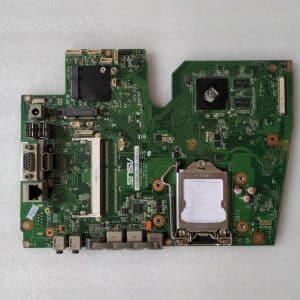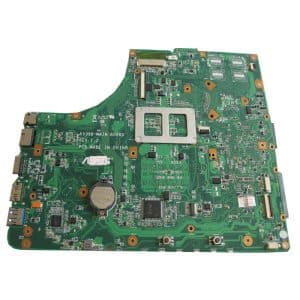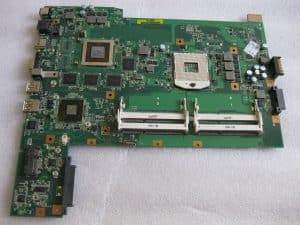Analysis of the causes of notebook motherboard damage
1. Short circuit and open circuit faults of various connecting wires
All connecting wires are short circuited where they should not be connected, and the connection is disconnected; (IC chips, resistors, capacitors, transistors, inductors and other components have broken, short circuited and broken down pins, wires, pins and power supplies, and ground wires are short circuited and connected; printed board wires are broken, short circuited, and pads fall off). These are common faults.
2. “DMA” controller and auxiliary circuit fault
“DMA” controller has strong functions and high failure rate; The auxiliary circuit chip and input signal circuit are also prone to failure.
Analysis of the causes of notebook motherboard damage
3. RS-232 serial interface controller failure
The serial interface controller in PC is either independent or integrated with other interfaces. The failure rate of the serial interface is high.
4. Clock controller and bus controller failure
(clock controller, bus controller, bus driver, control command chip), all of which may have faults
Analysis of the causes of notebook motherboard damage
5. RAM failure of memory chip
There are many memory chips in the PC, with a high utilization rate and a high failure rate of the chip itself.
6. Data bus fault
In the mainboard (CPU, memory, data transmission bus of I/O equipment, bus buffer register/driver), etc., faults of varying degrees also occur.
7. Address bus fault
It is shown in the address bus, address latch, address buffer register, driver, etc. where the CPU transmits the address in the motherboard.
Analysis of the causes of notebook motherboard damage
8. Memory control signal and address generation circuit failure
It refers to the error of RAS/CAS row and column address strobe signal, row and column address delay control signal and row and column address circuit.
9. Poor contact fault such as individual socket and pin looseness
It refers to chip and socket failures caused by (corrosion, oxidation, weakening of elasticity, desoldering of pins, broken wires, poor contact of switches).
10. I/O channel slot fault
It refers to I/O channel slot failure (copper strip falling off, elasticity weakening, open circuit and short circuit, pin welding, desoldering, excessive dust or foreign matter falling).
11. Faults caused by special circumstances
It refers to faults caused by electric shock, strong impact, electric shock, sudden voltage rise, load mismatch or unreasonable design, as well as man-made faults caused by improper installation, setting and use. Chips (timers, counters, interrupt controllers, parallel interface controllers) may also have failures, but the failure rate is generally low.
12. Fault of power controller
Analysis of the causes of notebook motherboard damage
A general power output controller has large current and large heat. If the quality of the control chip or integrated block is poor or the heat dissipation is poor, the failure rate is high. Moreover, the power filter capacitor around it will work for a long time under high temperature environment, and will also become invalid due to the drying of electrolyte, which will increase the ripple of power output, leading to unstable operation of the motherboard.
The above faults will not occur on the motherboard. About 60% of failures will cause the motherboard to fail to start; 35% of failures will cause the mainboard to work abnormally; The remaining 5% are random special faults, which are displayed as the main board status. instable.
If it still could not solve,you have to contact professional people to solve it.
We supply notebook motherboard for many models. If you want them,please contact us whats app 13670040975. [email protected]
We also sell many other laptop parts,such as laptop keyboard,laptop motherboard,laptop lcd hinge,laptop lcd cable..We also have polarizer films,led strips..


